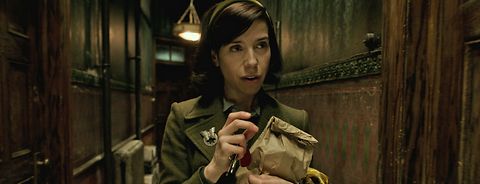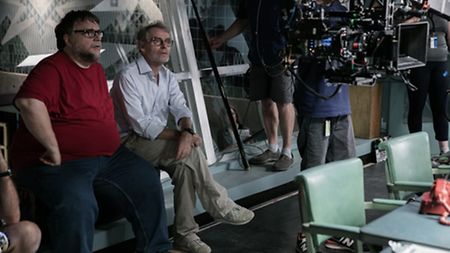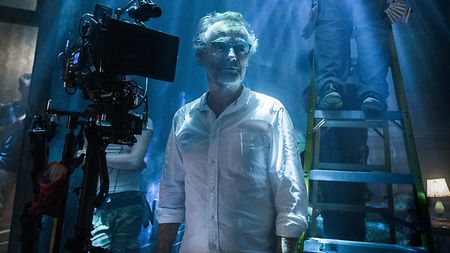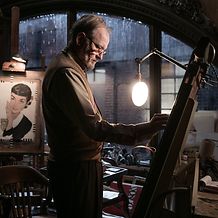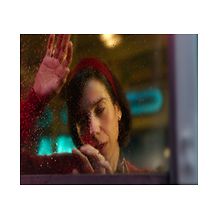Two aspects of "Shape of Water" immediately intrigued Laustsen. First, the two leads in the film - Elisa (played by Sally Hawkins) and the amphibian creature (played by Doug Jones) - did not speak a word. "That whole idea of two mute characters connecting is very cinematic," he says. The fact that so much of the movie takes place in and under water was equally interesting. "Everything's in motion in the film," he says. Laustsen relied on the ARRI ALEXA with ARRI/Zeiss Master Prime lenses. "You can really see the details with this combination," he explains.
Laustsen and del Toro charted very precise camera movements. "The camera is moving all the time," says Laustsen, who reports that he utilized Steadicam, dollies, jib arms, hot heads and a Technocrane. Because the film budget wouldn't allow for a Technocrane all the time, he adds, they had to plan carefully. "We had some fantastic dolly grips," he says. "Guillermo talked to them through headsets. He knows exactly where the camera should be, because he knows how he's going to cut it together. That's why the camera is not tracking in and out. It's just floating because he is going to cut from one camera movement to the next camera movement."
Lighting was both challenging, because of the constant camera movement, and crucial to the film's look. "It was well organized with very close relationships between me, the production designer, the makeup and hair people, wardrobe and of course Guillermo," Laustsen says. "All the colors were important, but especially the wall colors, which were painted a steel blue shade." The opening and ending scenes were shot dry-for-wet, which allowed the actors to perform with their eyes open. "All of that is in camera, shot with Steadicam, with an insane amount of smoke in the studio," he says. Wind machines are moving Elisa's clothes, and some rear projectors were used as a key light that is also moving around. The sequence was shot at 48 fps, and Toronto-based visual effects facility Mr. X added in the fish and floating elements. "It gives the feeling you're underwater, but not realistically, which is a good tone for the movie," he says.
The production also used ARRI SkyPanels, running on a dimmer board to light the apartment, located over a neon-lit movie theater, where Elisa lives. "We had a gag that the light was coming through the floor, and that was all SkyPanels," says Laustsen. "We used them as much as we could. With LED lights, you can make all the colors, all the changes in the world but it's easy to make a mistake so I had to be very careful." Del Toro loved the result. "Dan is a genius with light," he enthuses. "He was able to light the film as if it was 1950s B&W, even though we used color. The light is very expressionistic and full of shadows and I think feels very classic."
One of the scenes Laustsen is most proud of takes place in the bathroom, where the creature, in the tub, and Elisa realize they are falling in love. "We were changing the light for this steel blue-greens into a more gold, romantic light," he says. "It was so important to Guillermo and me that Sally look like a princess, and both of them look fantastic. It was a dolly/jib arm shot, and we were cheating the light all the time," he adds. "Someone who looks at it very carefully will see that we changed the key light from one side to the other. But we didn't want to tell a realistic story. We wanted to tell a fairy tale, and I think that worked really well."
